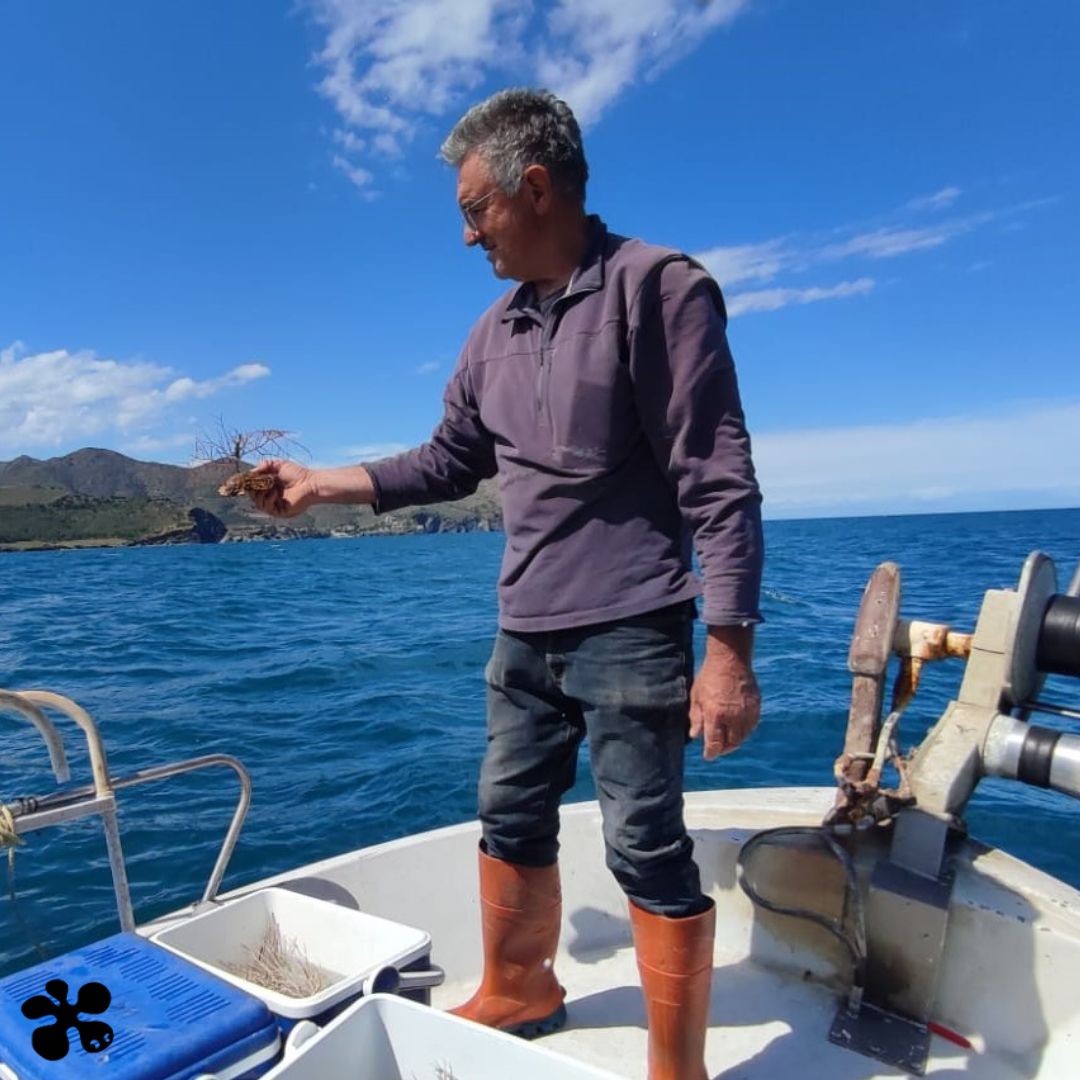06-05-2024
Fishermen's confraternities begin the process of returning to the sea corals, gorgonians and sponges recovered by the LIFE ECOREST project
The fishing guilds of Blanes and Llançà that participate in the LIFE ECOREST project - an initiative to protect marine ecosystems - have begun the process of returning to the sea corals, gorgonians, sponges and other sessile organisms that had been accidentally captured by fishing gear. After being rescued from fishing nets, these organisms were recovered in the aquarium equipment installed in fishermen's guilds in Girona and Vilanova y la Geltrú (Barcelona).
The LIFE ECOREST project has the participation of a team of experts headed by Cristina Linares and Andrea Gori, from the Department of Evolutionary Biology, Ecology and Environmental Sciences of the Faculty of Biology and the Biodiversity Research Institute (IRBio) of the University from Barcelona.
This initiative, coordinated by the Institute of Marine Sciences (ICM-CSIC) until 2026, aims to restore nearly 30,000 hectares of deep marine habitats in Catalonia with the active participation of the fishing sector. LIFE ECOREST has as partners the University of Barcelona, the Territorial Federation of Fishermen's Guilds of Girona, the Biodiversity Foundation of the Ministry for the Ecological Transition and the Demographic Challenge, and the World Wildlife Fund-Spain (WWF), and has the financial support of the LIFE Program of the European Union.
Restoration of deep marine habitats
Within the framework of the project, fishermen are now beginning to release organisms rescued from fishing nets and recovered in the aquarium equipment installed in brotherhoods located in the province of Girona and Vilanova i la Geltrú. The first returns have taken place in Blanes and Llançà. These organisms are returned to the sea in the permanently closed areas where the project operates. The Badminton method is a technique that consists of fixing the organisms to a wheeled side and returning them to the sea from the deck of the fishing boats. This process allows organisms to reach the seabed and remain in an upright position, which is optimal for their survival.
This methodology has been used in previous oceanographic campaigns successfully developed by UB and the ICM-CSIC within the framework of the project. A total of 451 organisms have been released in four closed areas, at a depth between 90 and 140 meters. During these campaigns, a bioreleaser (BiLi) has been used in a pioneering way, designed to adapt the Badminton method to great depth and thus be able to release a greater number of individuals. The gorgonians Eunicella cavolini, Eunicella singularis affita and Leptogorgia sarmentosa (bryozoa), the soft coral Alcyonium palmatum, as well as different species of demosponges have been the main organisms returned to oceanographic campaigns. Thanks to the images obtained through a remotely operated underwater vehicle (ROV), it has been possible to verify the survival success of the restored gorgonians, which reaches 95% one year after the first return.
After the success of the oceanographic campaigns, in the new stage now begun in the project, the return of organisms is carried out from fishing boats. The fishing guilds of Blanes and Llançà have been the first to return to the sea the organisms that were accidentally entangled in fishing nets. Transferred to the aquariums installed in their brotherhoods, these marine organisms have been maintained and recovered thanks to the coordinated work between the scientific team of the UB, the ICM-CSIC, and the brotherhoods participating in the project. So far, this joint work has allowed more than 750 organisms to be rescued from fishing nets and recovered in aquariums.
In addition to research and conservation actions, the participatory management of the fishermen who are part of the project is being promoted. The governance mechanisms are being strengthened, and the population is being sensitized about the importance of conserving deep marine habitats.
Source: UB Press
